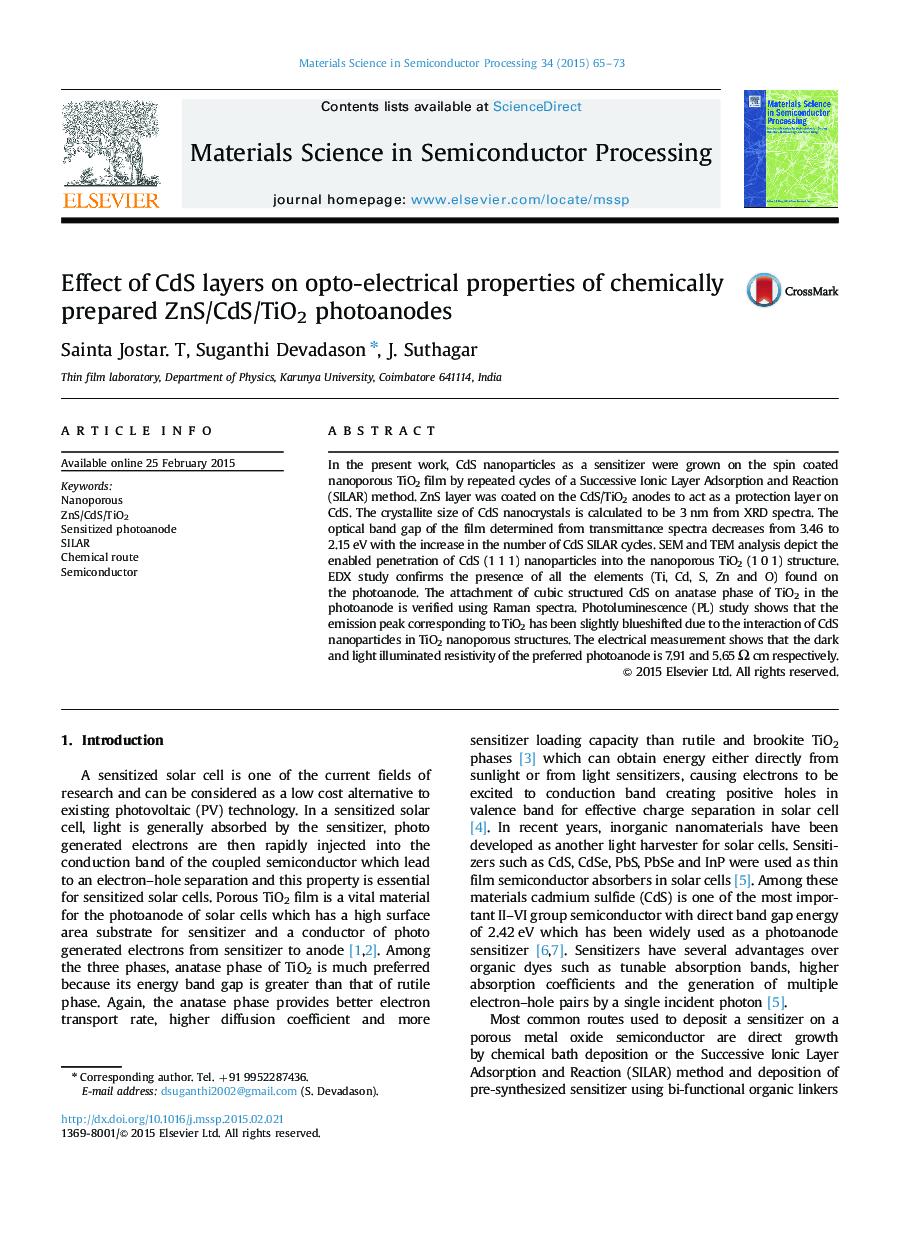| Article ID | Journal | Published Year | Pages | File Type |
|---|---|---|---|---|
| 727954 | Materials Science in Semiconductor Processing | 2015 | 9 Pages |
In the present work, CdS nanoparticles as a sensitizer were grown on the spin coated nanoporous TiO2 film by repeated cycles of a Successive Ionic Layer Adsorption and Reaction (SILAR) method. ZnS layer was coated on the CdS/TiO2 anodes to act as a protection layer on CdS. The crystallite size of CdS nanocrystals is calculated to be 3 nm from XRD spectra. The optical band gap of the film determined from transmittance spectra decreases from 3.46 to 2.15 eV with the increase in the number of CdS SILAR cycles. SEM and TEM analysis depict the enabled penetration of CdS (1 1 1) nanoparticles into the nanoporous TiO2 (1 0 1) structure. EDX study confirms the presence of all the elements (Ti, Cd, S, Zn and O) found on the photoanode. The attachment of cubic structured CdS on anatase phase of TiO2 in the photoanode is verified using Raman spectra. Photoluminescence (PL) study shows that the emission peak corresponding to TiO2 has been slightly blueshifted due to the interaction of CdS nanoparticles in TiO2 nanoporous structures. The electrical measurement shows that the dark and light illuminated resistivity of the preferred photoanode is 7.91 and 5.65 Ω cm respectively.
